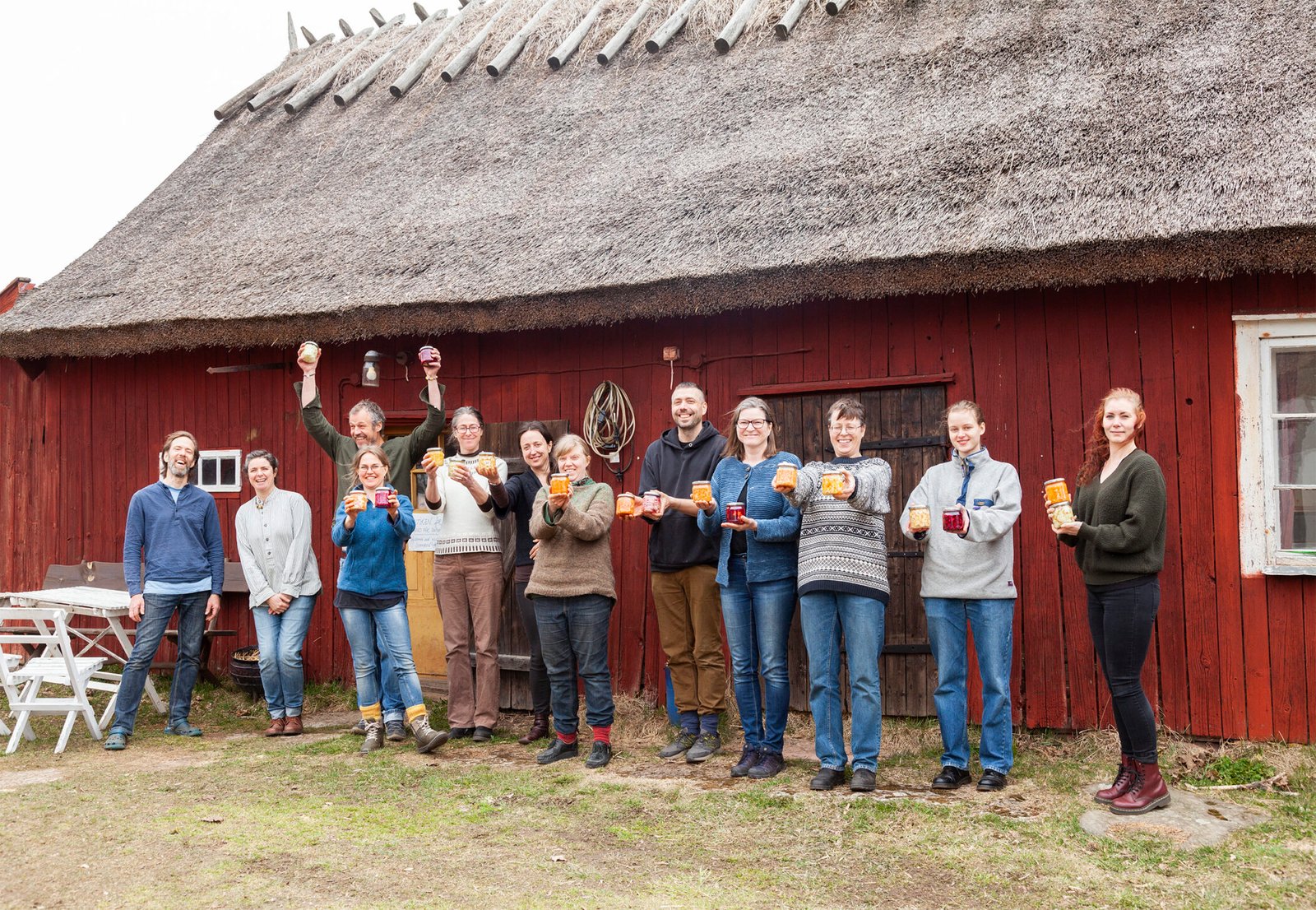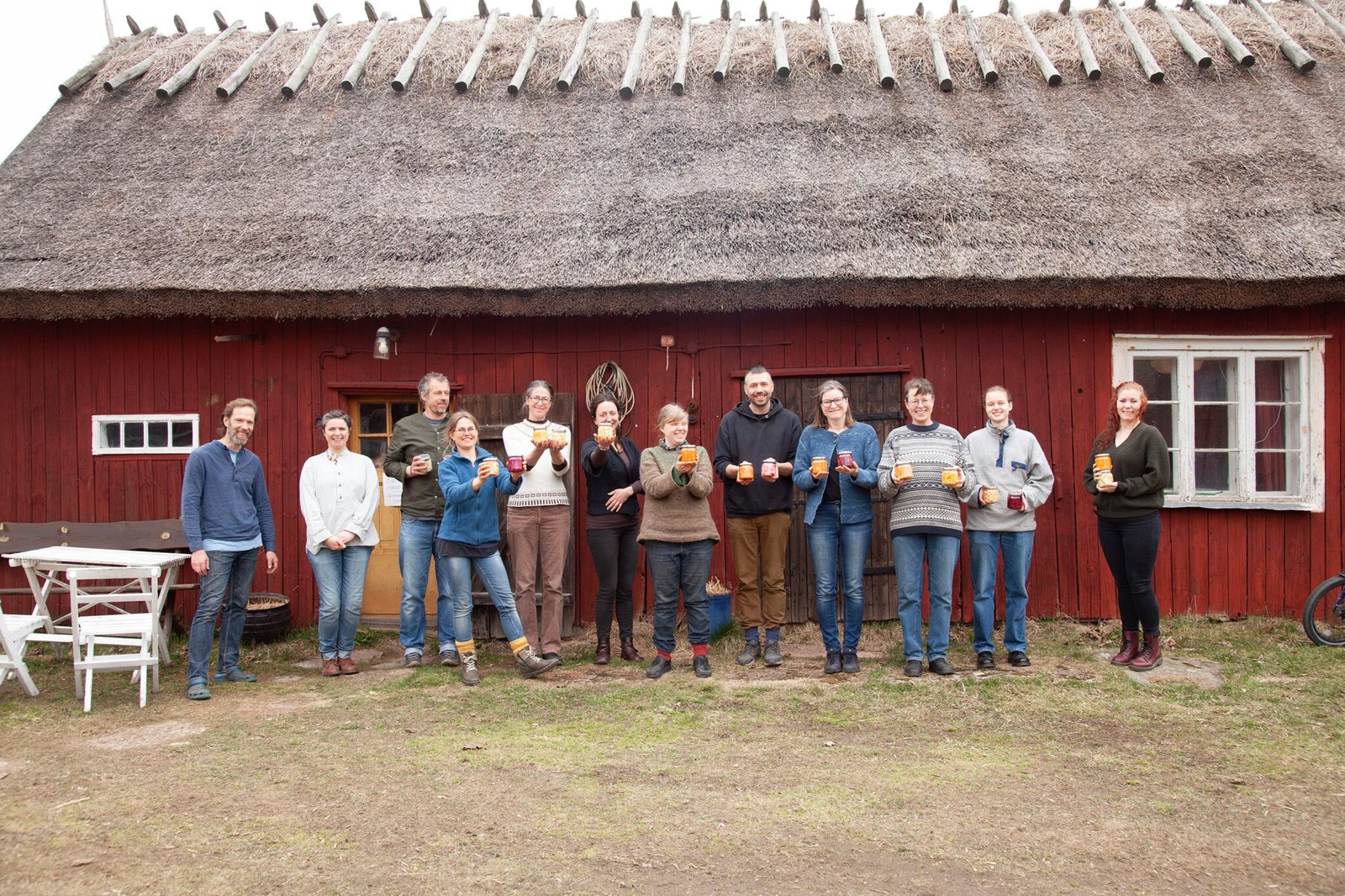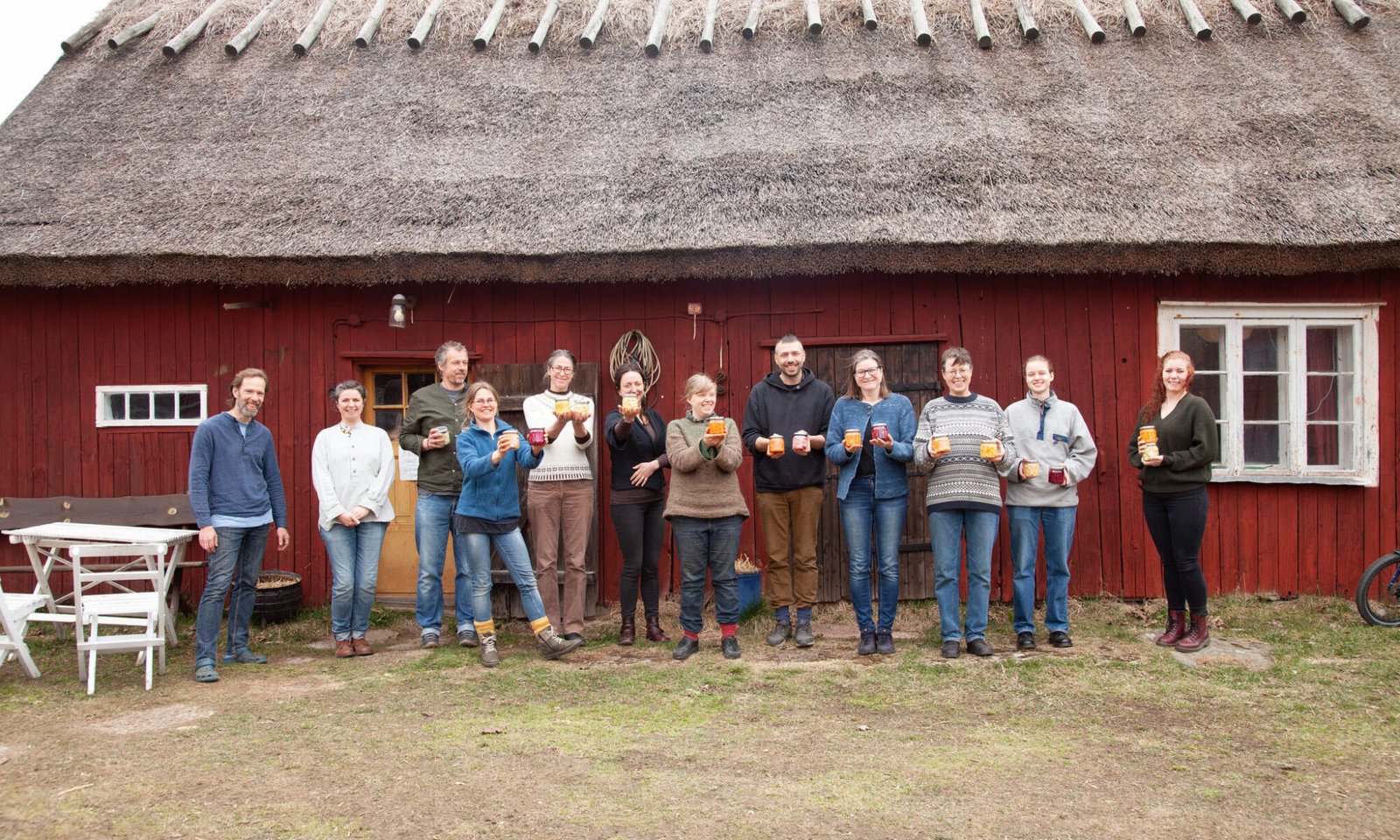
Conversation with Sanna and Jonas
The last stop on the tour is Bossgårdens Grönsaker, where we held the final of the five full-day courses on Förädlingsodling: fermentation for small-scale vegetable growers in April 2022. Since then, they have built a simple processing kitchen, which was completed in August. I meet Jonas Ringqvist and Sanna Mattson Ringqvist, and we enter the processing kitchen to take a look. “It didn’t cost much more than 5,000 SEK to build,” says Jonas. “We had an approved kitchen before, so they already knew us. It was pretty straight forward. We have the same refrigerator, the same sink. We had developed our own control program, which was very well thought out. We will also do other types of processing where there are more risks – critical points, temperature measurements. We know what we need to do. We also received assistance from Lokalproducerat i Väst to get feedback on our own control program. It was very helpful, free advice.”
We discuss fermentation, weights, and temperatures, as well as the advantages of using a cabbage slicer (mandoline) versus a mechanical food processor. Since the kitchen was completed, they have already released a range of lacto-fermented and otherwise processed products. “The first thing we made was a zucchini relish – it was a hit! We should have made more, but now we know for next season,” says Sanna.
At Bossgården, they grow vegetables, have a few sheep and pasture, some chickens, and a few summer turkeys. They are Demeter certified, and the farm is self-sufficient in animal feed and fertiliser. They have half a hectare dedicated to vegetables and 1.5 hectares arable land. They have also planted fruit trees and offer courses, including a collaboration with Hushållningssällskapet. Jonas travels as a lecturer. There is one employee year-round and 2-3 during the season. “Actually, we have more employees than we really need, so we can take it a bit easier. It works out. We are no longer in the start-up phase; we’ve been doing this for so long that it just runs smoothly. We’re living the high life, thats how it is.” says Jonas.


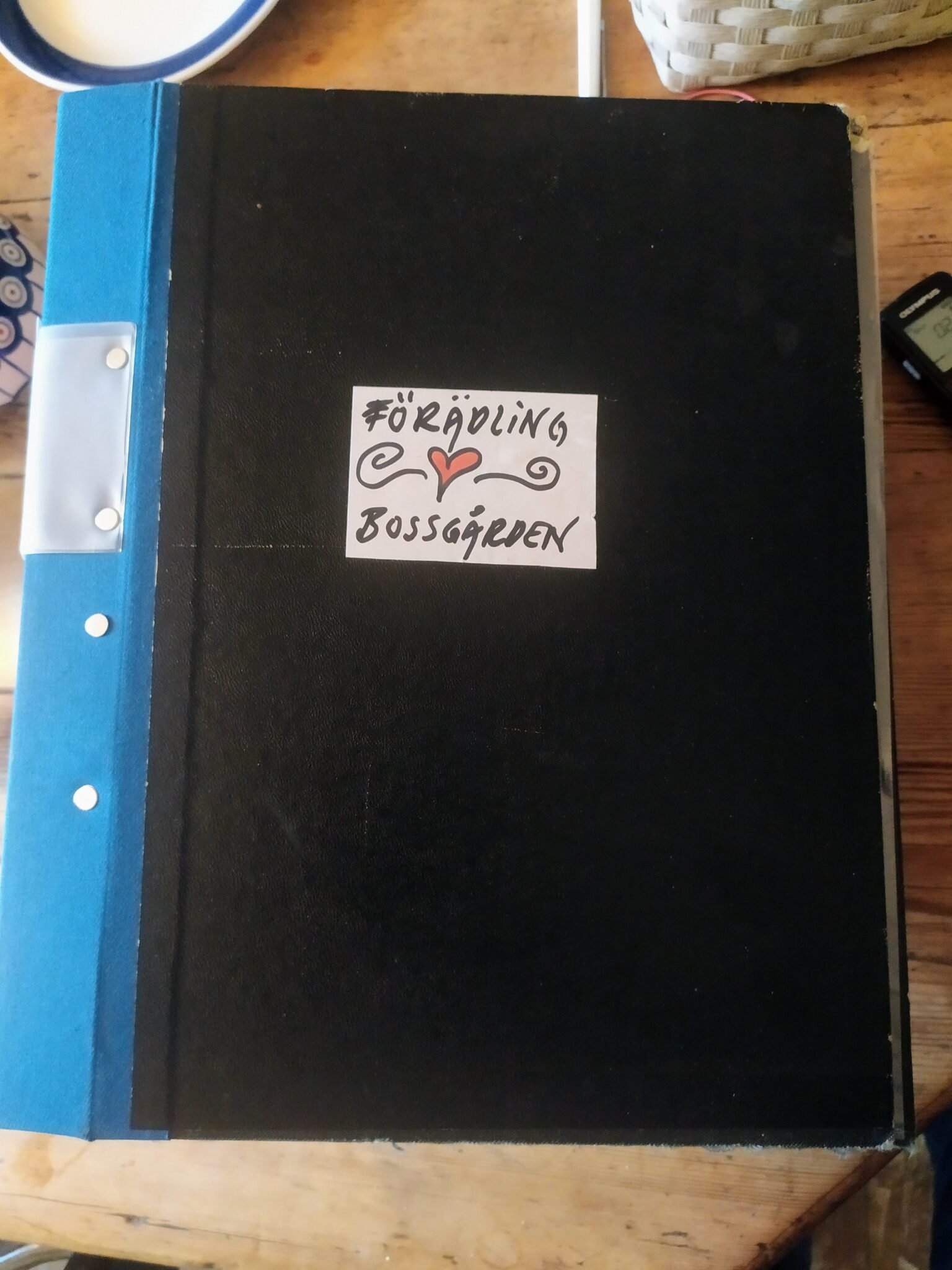
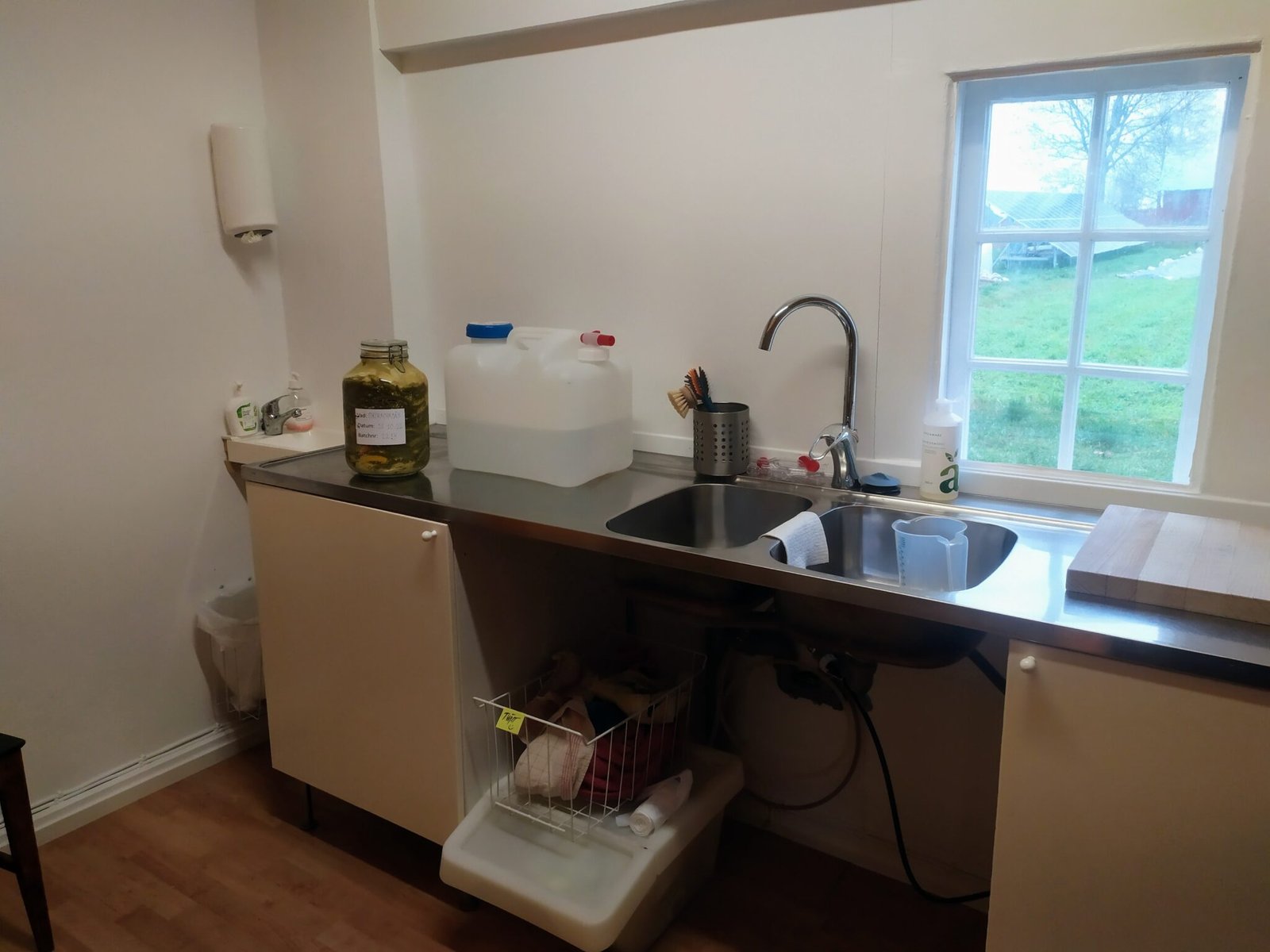

The lacto-fermentation is done in 12-liter fermentation buckets. A label on the bucket shows the batch number and contents, which are linked to a page in the processing folder where there is some additional information, including the number of jars produced. Labels are attached to the nice-looking jars using wallpaper paste that is easy to remove during dishwashing so that the jars can be reused. “It will be interesting to have this kitchen during the growing season – the idea was to be able to handle the surplus,” says Jonas. “We managed to do a bit with the beans. Cucumbers, zucchinis, and beans can have excess production during certain periods, even summer cabbage. We primarily see this as a complement, it’s an experimental year – we’ll see how our customers respond. At least now we have enough different products to better introduce it to our customers,” says Sanna.
Orders are placed through Reko-Ring as well as by their 42 vegetable subscribers. “There were around 30 jars that were sent out in the latest delivery, – if it were like that every week, then it works. That’s about one 12-liter bucket per week. We had a lot of processed items – even sweet chili sauce that is not fermented – it’s very popular – it was made from a chili variety that goes from red to yellow – we’re starting to save our own seeds and hope to achieve a certain stability with the variety,” says Jonas.
I am invited for lunch and a large jar of ‘pizza salad’ is brought out. “We had a lot of bell peppers that we couldn’t sell, so we tried to come up with all sorts of things we could do with bell peppers – and then we thought of making a pizza salad with green bell peppers.”
The fermented pizza salad is made with the cabbage variety Donator, 1.5% salt, shredded green bell peppers, and oregano. Yum!
So far, we have made 17 batches of fermented vegetables, which amounts to 500 jars of various products. It is still at a level where if there is something that people don’t want to buy, we can eat it ourselves.

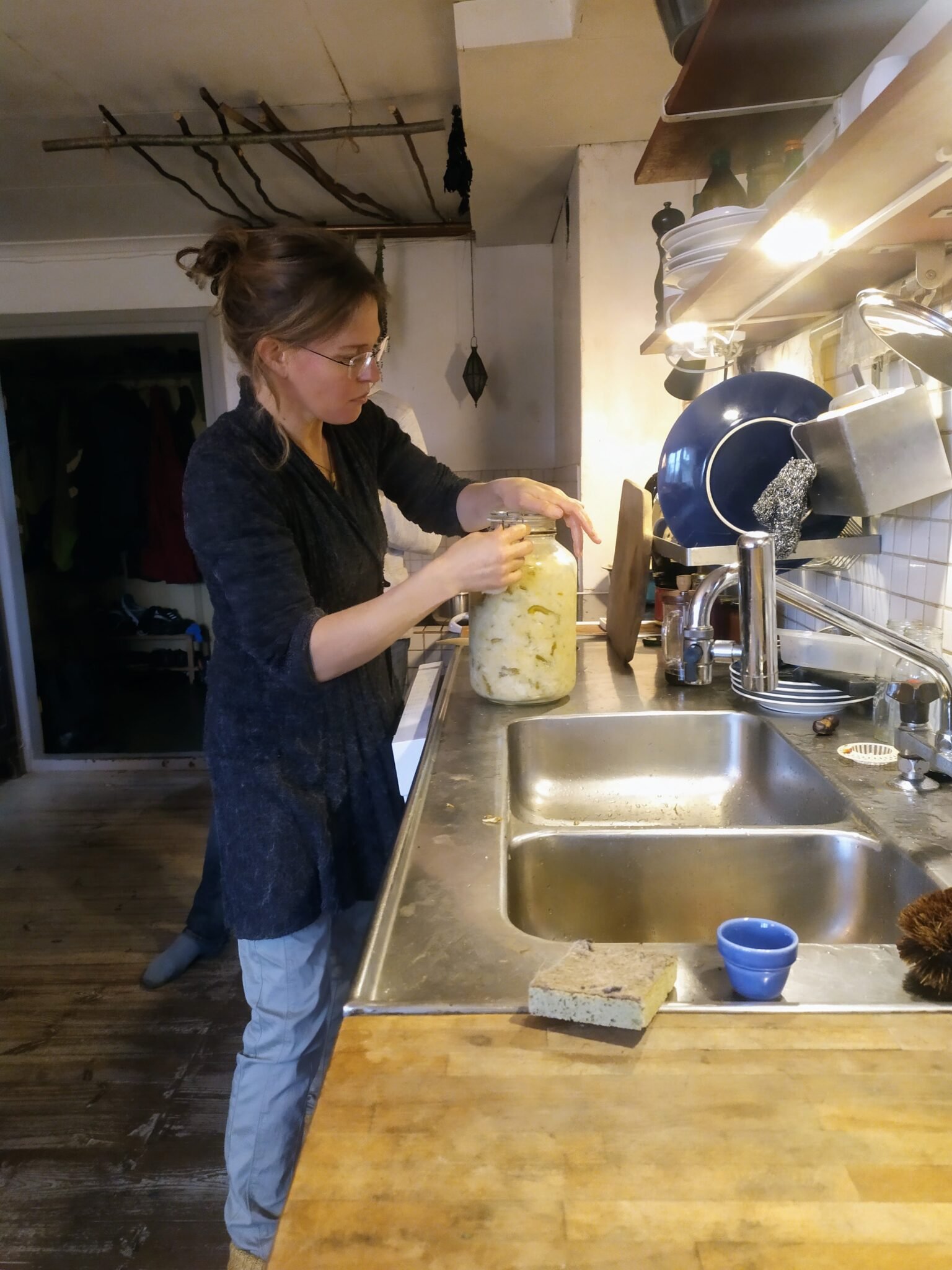
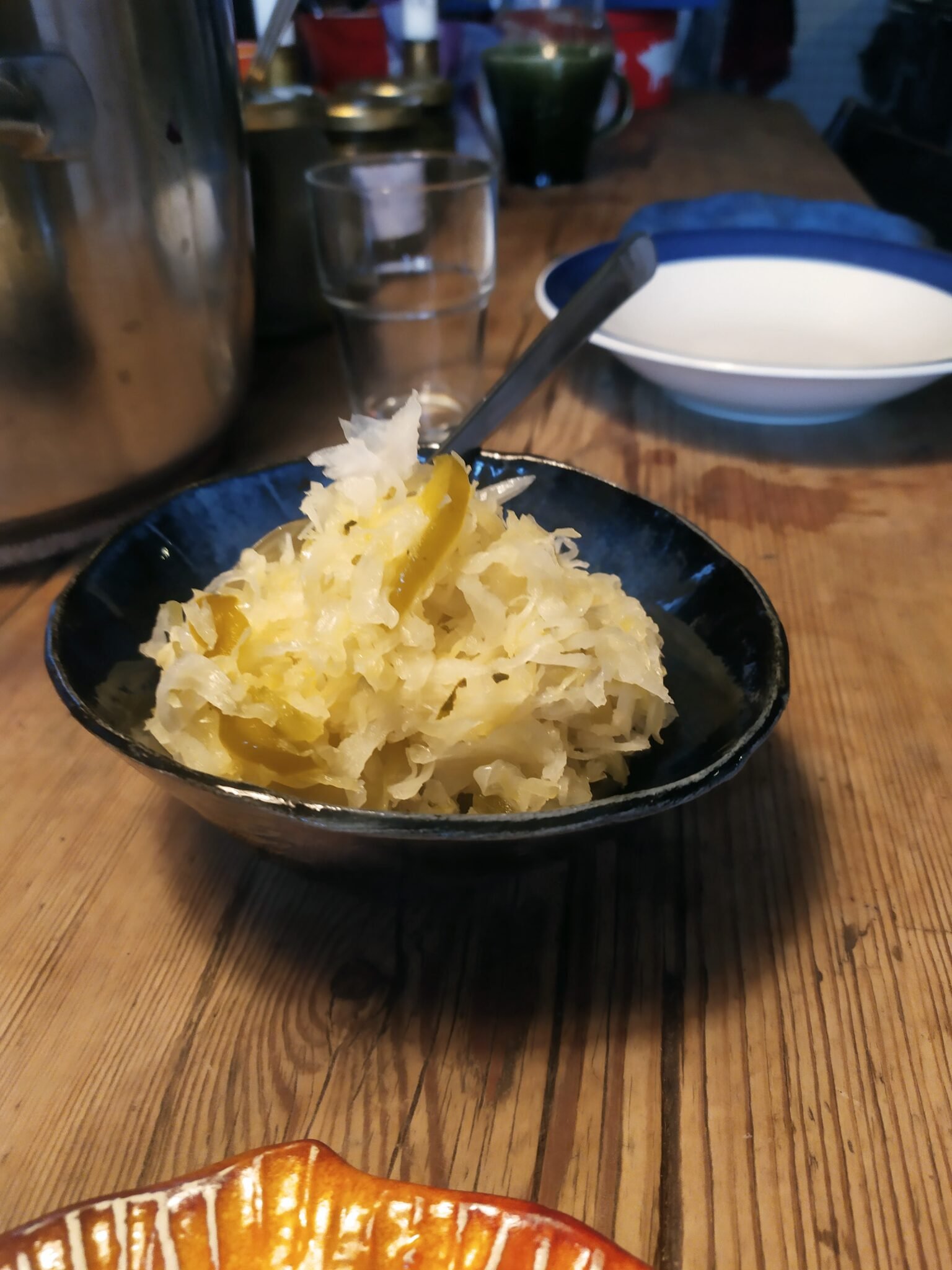
We discuss the consistency of a cucumber kimchi that wasn’t released to customers. I think it’s perfectly fine, but Jonas doesn’t think it’s good enough. “It varies within the jar, but the fact that it bubbles feels nice – like champagne. We can easily eat up 30 jars of these cucumbers,” says Jonas.
I ask if they have encountered any problems with fermentation, and Jonas laughs. “The cucumber skin – does it meet the standards? That’s the worst we’ve experienced. What could go wrong?” We have been fermenting for many years and have made a few mistakes – there have been the occasional slimy zucchini and overly dry sauerkraut, but not this year – we took a really good course last spring, that must have been it.” We laugh – they actually have much more experience than I do. “The course was really good – having you here triggered something that was waiting beneath the surface, something that needed to be sparked. We want to ferment because it’s fun – not to make more money. We have always fermented for ourselves, so it feels like a natural thing to do. It’s hard to just do the same things all the time. It feels like a great addition to what we already do. It feels right to be able to offer it to our customers – they need it.”
I ask Nanna, who is from Denmark, is very interested in food, and is employed at the farm, if she had fermented vegetables before coming to Bossgården. She answers no, but now she finds it fun and delicious. “It’s a whole new world of flavours to get to know, there’s a lot I’m discovering for the first time now.”
They haven’t calculated the economy of it yet, they did it once before they started, but then the season was in full swing and they decided to let it take its course. “Even though it may feel challenging to sell in Tidaholm, we have been surprised by the diversity of people who have placed orders. I think many are conscious of the health aspect. They may not have it as a tradition from home, but they have health in mind,” says Sanna.


I ask about their pricing considering the increased prices of jars, among other things. “We charge 35 SEK per jar across the board. The same price for all jars, even though they have different sizes depending on the contents, to make it work. People are holding onto their money now, I’ve noticed. Our sales at ICA are completely gone – people stopped buying. So, my thinking is, if everyone raises their prices, I’ll lower mine – it’s a personality trait of mine. But that’s not why we’re doing it; we’re not going to undercut anyone else. There is no one else,” Jonas adds. I wonder if it’s the same with the vegetables, that they keep the prices low. “That’s probably true. And now, as we enter this recession, people are holding onto their money. If we had been operating at double the price, if we had built our business on that, we wouldn’t have a chance now. We have customers from all social classes, and that’s very important. We would still be able to afford to buy our own vegetables,” says Sanna.
I leave inspired and with two jars of the tastiest chili sauce I’ve ever tried.
Jonasand Sanna were host to and participants in a whole day workshop Förädlingsodling: fermentation for small scale vegetable growers April 2022.
